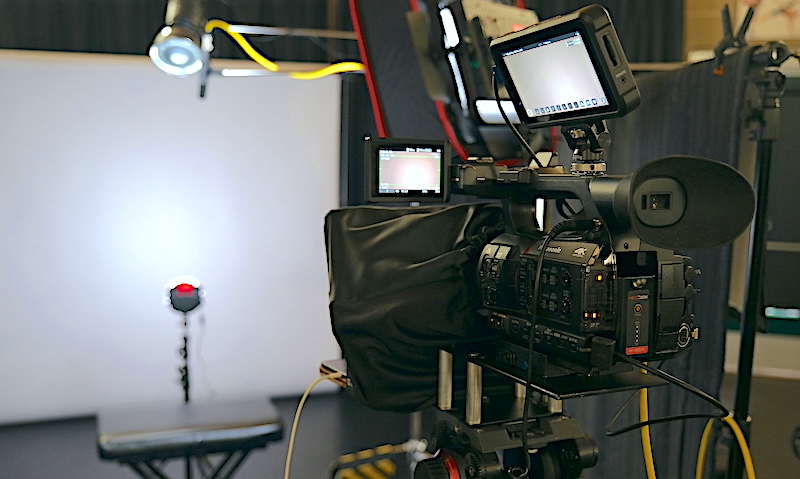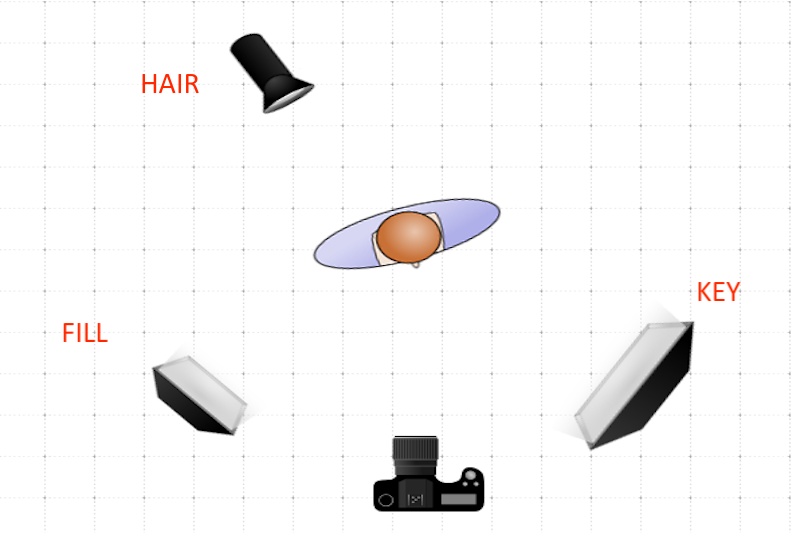Corporate talking heads are a straightforward concept. However, making talking heads that are both professional and effective can be challenging.
We know that, in essence, a talking head involves a simple head and shoulders shot, in which the subject speaks. There are a few variations on this theme: direct to camera vs off camera; single-camera vs multi-camera; location vs studio, etc. However, the whole point of a talking head is simple directness. Unfortunately, simple in concept is often confused with easy in practice. This is why we see some fairly grim examples of self-help talking heads online.

So why is it a challenge to make good corporate talking heads?
Let’s get it over with, talking heads can be boring!
Talking heads are, by their very nature, quite dull, so finding ways to grab and hold your viewer’s attention is important. Although your primary purpose may be to inform and persuade the viewer, you need to entertain them as well.
In corporate talking heads, what’s onscreen stays onscreen!
Talking heads are more or less static, a little like photographs. This gives the viewer time to look around the frame and to dwell on both the subject and background. Every onscreen detail lingers, so incongruities get noticed, while distractions and irritations become amplified.
Who’s your talking head for, what do they need to know, how are you going to tell them?
Without care, corporate talking heads can take far too long to tell us what we don’t need to know, in a language we don’t understand! Knowing your endgame, i.e., who is watching, why they’re watching, and how you keep them watching is essential! Fail to grasp this and your talking head is nothing more than self-indulgence.
It’s a video, but what they hear is most of the story!
Good audio is vital to successful corporate talking heads. You need to ensure that every last word is heard clearly and easily. Poor visuals will certainly irritate your viewer, but poor sound will irritate them more
So, with the issues out in the open, what can we do to get over them?
Top tips for successful corporate talking heads.
Understand your audience and how to reach them.
Before you start your talking head production, make sure that you identify and understand your target audience. Consider who they are, what their needs and aspirations are, and the language they use. If you don’t know then find out; a little research can go a long way! Use this knowledge as part of the brief for your talking head and ignore it at your peril.

Be clear and concise with your key message/s.
Know exactly what you want to say. Avoid overloading your video with too many ideas. Stick to two or three headlines at most, ideally just one; you can always make other videos. Don’t get bogged down in lengthy explanations and examples. Avoid using jargon and acronyms that your audience may not be familiar with.
Don’t try to wing it! Even if you just use a bullet list, a script of some kind will keep you on track. Make your script clear, concise, and engaging. Don’t try to be too clever. Ask someone else to take a look at your script, preferably someone from your target audience. Listen to what they have to say and don’t get precious.
Find out how long your video should be in this article from Maestro Learning
Choose the best onscreen talent for your corporate talking heads.
You don’t need a Hollywood A-lister as your onscreen talent, but you do need the best person available. Again, thinking about your message and your target audience, try to find someone who fits the bill. They should look and sound right and need to be able to deliver your message clearly and convincingly.
Think about your backdrop.
Depending upon your message, audience, and circumstances, you may want to shoot on location. Having an interesting backdrop can be a bonus, particularly if it supports your message. If you do shoot on location, have a good tidy-up before you start. Think about what’s in your background and remove anything distracting. Maybe add a few props if they help deliver your message.
An alternative is a plain or slightly textured backdrop, like the ones used by portrait photographers. These are cheap and can usually be stored quite easily. If you use one of these, it may need lighting separately from your talent (see below).
N.B. Please don’t be tempted to shoot in front of a green screen and then put in a background afterward. It’ll look bad, I promise!
Sort out your lighting!
Mixed lighting can look very bad on video. Try to make sure all of your lighting is the same colour temperature. If part of your lighting mix is daylight, then your artificial lighting needs to match this.
Try to get rid of any deep shadows on your talent’s face and use diffused lighting rather than harsh directional lamps. Another good technique is to use white card reflectors to fill in shadows. Whatever you do, don’t have your talent in even partial silhouette. This can often happen if they sit with their back to a window.
If you’re using a plain background light this separately to your talent. A nice soft light behind your talent gives a halo effect, which adds interest to a plain background.
If you have the resources, use three-point lighting to help give depth to your image.

Classic Three Point Lighting
Sound is half the picture.
You’ll find the above quote, from George Lucas, used a lot on this website. I can’t emphasise enough how important good sound is to any video production. This definitely includes corporate talking heads.
Get your mic in nice and close to the talent, but make sure it’s out of shot. A boom mic just in front of and just above them works well. A lavaliere or lapel mic is also a good alternative, but hide the cable if you can.
Whatever you do, don’t use a built-in mic on your camera. The quality of this will be poor anyway, but worse, you’ll be too far away to get clear audio. While we’re there, don’t use auto-recording levels. They’ll cause an odd breathing effect as the level of background sound rises and falls.
Learn more about recording sound for video.
Change your perspective.
There are two main ways of doing this in your corporate talking head videos. You can use two cameras to capture the video and then edit between them in post-production. Alternatively, use a single camera, but shoot a little wider. You can then re-frame your subject periodically in post-production by moving in and out.
A byproduct of doing either of these is that you can also edit out any bloopers or pauses. However, because the shot has changed, the viewer perceives the action as continuous.
Learn more about multi-camera production.
Know when you need help.
It’s popular to believe that quality online videos can be made with any half-decent camera and a little enthusiasm. Unfortunately, YouTube is littered with the results.
If you’re new to producing corporate talking heads, or if you want your videos to stand out, call in a professional partner. Remember that your corporate talking heads represent your organisation and could continue to do so for some time. Cheap and cheerful rarely makes the right impression!
Learn more about my corporate video production services.
Stourbridge-based Mooma Media offers event audio-visual support, event filming, live-streaming, video production, and still photography services to businesses, the public sector, and other non-commercial organisations throughout the Black Country and the wider West Midlands region. To discuss your project, or for a competitive quote click the button below.
Corporae talking head production in and near:
West Midlands county: Birmingham, Solihull, Sutton Coldfield, West Bromwich, Dudley, Walsall, Wolverhampton.
Staffordshire: Lichfield, Tamworth, Stafford, Cannock,Burton upon Trent.
Shropshire: Telford, Shrewsbury, Bridgnorth, Kidderminster, Ludlow.
Worcestershire: Bromsgrove, Reditch, Droitwich, Worcester,
Warwickshire: Warwick, Stratford upon Avon, Leamington Spa, Coventry, Nuneaton,


Comments are closed